A conversation with Peter Tepe | Section: Interviews
Abstract: Mischa Kuball’s Broca project draws upon neuroscientific findings. As part of this project he placed image-producing apparatuses inside CAT scanners. Further scientific references in his work result from his study of social pedagogy. Thus, the patient’s perspective was important in this project.
Part I[1]
The online journal deals with all existing connections between science and art, including the crossing of borders between both fields, i.e. individuals that work scientifically as well as artistically but also artists dealing with scientific theories, methods and results of this or that discipline without being scientifically involved themselves. The aspirations comprise the facilitation of background information in order to enable a better understanding of those phenomena of art that are related to science. This goal also is subject of the interview with Mischa Kuball, which took place on 30 April 2015 in his atelier in Düsseldorf.
Primarily, you are an artist, but your work also includes some aspects of science. Could you please state which sciences are concerned and what your connection with those disciplines look like?
I do not perceive myself as a double-competent cross-over worker between science and art, but rather as an artist who is working transdisciplinary. As an artist, I contribute to certain scientific research projects. Particularly, there are cooperation projects with the neurosciences neuropsychology and neurophysiology.
Can the artistic parts you are contributing to the research projects be defined more precisely? Do involved scientists expect you to do something particular within the framework of the respective project which they cannot do themselves? Do you have a certain function within these projects?
At first glance, such assignments exist but it is debatable if it will actually be implemented. The Broca project has triggered off a lot. It started with very personal questions about my private environment – in the process, the birth of the twins Vincent and Rubens played a role, and likewise the severe stroke of my mother-in-law did. The first outcomes could be experienced spatially at Konrad Fischer’s exhibition Broca’sches Areal[2]. I was supported by Professor Frank Ulrich from Krefeld and Professor Irene Daum from Bochum.
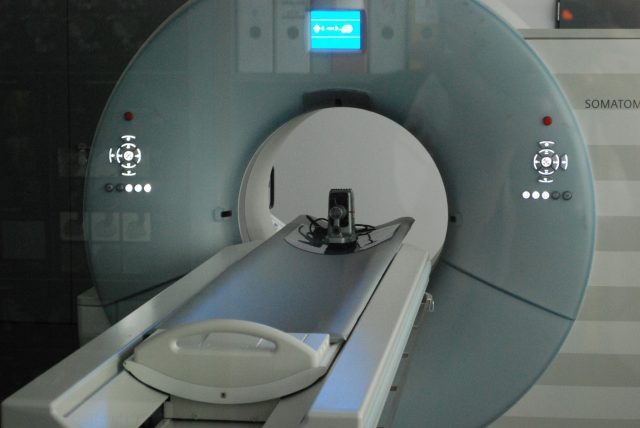
Medical-historically and -technically seen, matters did converge in my estimation. There are parallels between shining through physical subjects since Röntgen 1895 and shining through celluloid material with the invention of film. The inclination towards the interpretative aspects of the new picture is what connects these developments with each other. Formerly in medicine, the skullcap needed to be opened in order to reach certain diagnostic findings; this has been replaced by pictures, imagination, projection, imago and interpretation.
Can it be assumed that the neuroscientists you are cooperating with have realized that pictures that were generated by certain technical devices play an important role, and that you are being consulted as an expert in interpreting images – along the lines of “We need somebody who further engages with the aspect of imagery within our research”?
On the one hand, this certainly applies but on the other hand one can say that I am the one allowed to make mistakes. I am going far afield now: For seven years, I have been allowing the conduct of research on my own brain, without a medial indication being present. The ethos of medicine demands that somebody who makes use of diagnostic methods without medical indication, needs to sign an agreement stating that he or she will be informed about potential findings like e.g. an arterial occlusion.
So you engaged with this process only for the purpose of sheer self-examination without conceiving a certain suspicion.
I have been cooperating with three teams of researchers in different scientific and clinical contexts. The last one I have worked with has a private radiology practice to which I had access during weekends since the rate of occupancy was not relevant at that time. During the first phase, I had conducted or was subject to conduct of brain research without having any artistic ambitions for seven years. Throughout the second phase, I started placing image-producing devices such as photo or film cameras, lenses and projectors inside the CAT scanner – this time with artistic purposes. Deciding to place image-producing devices rather than myself inside the CAT scanner arose from an indistinct stimulus of not taking my brain as a basis anymore.
Radiologist Wolgang Lemmen from Düsseldorf feared that such experiments could damage his machine. Both of us were facing an undefined area. Whenever I am finding myself in an x-ray situation, I basically have to remove everything that is metallic because the rotating x-ray – the CAT scan – is being distracted by metal. Metal is producing so-called artefacts and this precisely is my starting point: I am solely interested in those artefacts that emerge from the insertion of image-producing devices – those are what I have been working with.
The artefact produces an original out of its own. Science is everything that’s reproducible; but in this case it is different: one will get another result each time. Seeing that, my artistic interest was caught.
Is it right that scientists approach you because images occur within their research context and because they look for a specialist contributing to their research findings?
No. Definitely not.
Mischa Kuball: image apparatus apparatus_flash, 2011, unique photography on aludibond (l.)
image apparatus_flash, 2011, two photos from a series of 44 (m., r.)
The last thing you mentioned leads into another direction regarding this: you have noticed that if image-producing devices are placed inside the CAT scan, it results in various outcomes and using this initial configuration, you would like to create something artistically.
Exactly.
In this context, one can distinguish two connections between the artist and a particular science. Model a: an artist contributes to the scientific cognitional project in a distinct way. Model b: an artist is artistically inspired by certain scientific research and the devices that are being used in the process. So you are working according to model b?
That is right. Until now, scientists have not approached me because they needed interpretive advice regarding imagery. I do not perceive my activities to be on the interpretive-illustrative level.
Therewith you point out an additional connection between science and art: scientists sometimes collaborate with artists, hoping that their research findings can then be presented having a greater external visibility.
This is not what I am looking for. I am specifically working with the concept imagery, using image-producing techniques, also within the neurological field.
As an artist, do you react to something in particular, that specifically fascinates you in the scientific field? Is there an infectious idea which then is given final shape to? I assume that artists who work scientifically oriented, each react to certain aspects of chosen sciences and that comparative analyses of several artists reveal intrinsic patterns.
Only retrospectively, I can talk about an initial spark. There were levels which were mostly concerned with visualization. Especially the image-producing techniques fascinated me. With it, new abstract images develop that are only existent because we talk about them. One only gets hold of it through talking. A medical practitioner working at a cancer research centre told me: “Actually we also create artistic images with the body introspections.” I replied that art fulfils other parameters than such images of a body. One has to distinguish between decontextualized and contextualized images; a certain context assigns the medical image a new interpretational scope. The artistic image has a different genesis, unless creating such images is the initial purpose – e.g. the intention of artists who work with their own bodies. My interest was: because those devices exist, I use them in order to visualize certain things in a way that they have not seen before.
Are you also interested in establishing personal relations with it?
No, I do not want a personal reference but a discourse about devices that allows me to inject my findings. On the one hand, pictorial scientists deal with what I have developed while on the other hand, I give it back to scientific discourses. Neurologists and other scientists whom I cooperate with can thereby react as follows: a speech therapist for instance could consider whether my Broca depictions could prove beneficial in his medical practice. A pre-linguistic level of brain activity can be reached. Before we are able to linguistically formulate something through the Broca area, there is an interpretive or connotative space which decides in which kind of subtle we are resorting and e.g. whether we see each other as a friend or an enemy, if we decide to trust each other etc. That is what is being thematised with the limbic system. I take the material from the scientific field, interpret it and convert it into a spatially accessible installation. Those neuroscientists who saw my installation at Konrad Fischer’s in 2002 said: “That does not have anything to do with science, but it gives an impetus to it. The deeper we can look into this system and the bigger the interpretive scope gets, the more precise we get, too.”
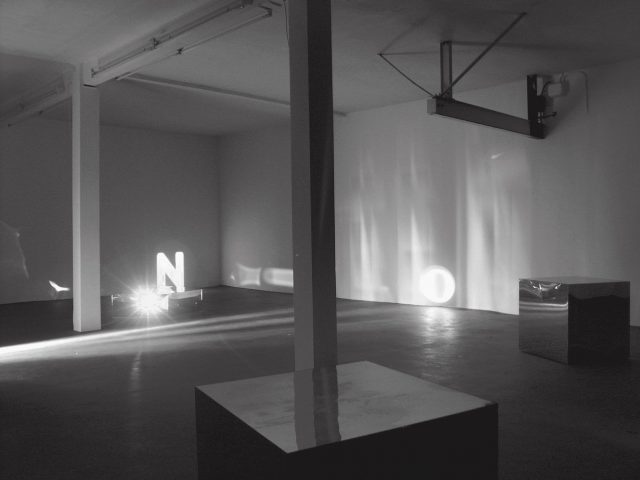
According to that, those scientists draw a rather structural profit from your artistic work, they do not expect you to directly contribute to scientific research.
I have started off with a general question regarding the scientific contacts within your work. During a former conversation you told me that you studied psychology, focussing on gestalt therapy without practically working in this field of expertise. This results in the question: Within your artistic work, are there scientific references related to it?
Absolutely. My first main field of research was – also because of early fatherhood – that I enrolled for social pedagogy emphasising on media theory and media education, focussing on child development in the first three years of age. I occupied myself with research concerning intrauterine effects of sound, vibration, light and suchlike in 1980. Today we know that no sound and no light can reach us without having an impact. That is why even the current sound of sewing in the adjoining room can negatively affect our conversation.
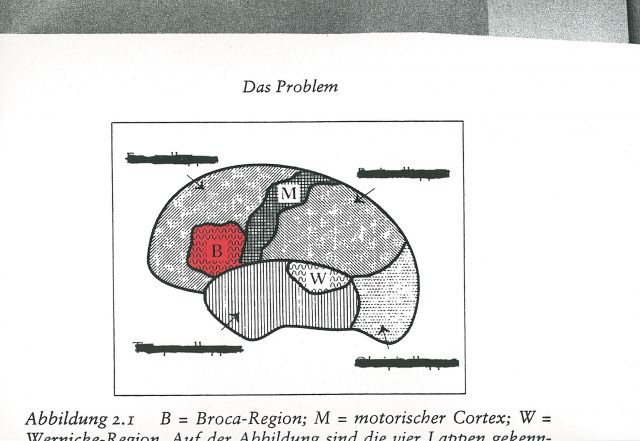
Is it correct that you did not complete a classical artistic training at an art academy?
I have never been interested in that. However, there was a single try. Back then, I had a job at a gallery in Düsseldorf that was representing the Zero-Movement. There, my attention was drawn towards Franz Erhard Walther who was teaching at the Hamburg Art Academy at that time. However, the application failed because it had an impetus that was alien to the system: I did not want to work in a class but with reference to a platform; incidentally I am currently implementing this with my teaching activity at the Kunsthochschule für Medien in Köln (KHM) (Academy of Media Arts Cologne). Now I am friends with Walther and I occasionally work together with him.
I initiate projects but I do not think of them as my own. I make sure that things can stay public, preventing them from turning into commodities or becoming too commercialized.
Are public relations and non-deterministic activities artistic elements that arose from psychological study contexts? Is it about scientific components, which then have become productive regarding art, causing a certain working model to accrue?
Yes. I took along the communicative aspects for example – that a conversation can have consequences. In some projects this is a constituent part while in other projects it is more abstract.
Let us talk about your light projects. On your homepage you refer to the aesthetics of perception. Could you further clarify that?
I work with disappearance; a temporary reference is set for about 90% of my projects from the very start. The absence of the materialized plays a vital role. In one of my projects I projected various contents on a surface area, or the contents moved as projections throughout the room.[3] The directional reference was also thematised – until becoming frenzy. Frenzy and trance are very important to me. This might sound far from any scientific aspect but one can retrieve it quite fast. There are small transitions and I am interested in those transitory moments. Through psychodynamics as part of bioenergetics, which I have been concerned with, I found out that e.g. with the help of hyperventilation or other additives, one can put oneself in a trance. I push dopamine to a certain level through various kinds of sportive activities, and when I say that I am jumping out of my bed in the morning, it is not exaggerated. I only need four hours of sleep and then I get up feeling fit – this feeling stays until night time. This has also been measured: I have an electrolytic tension between the synapses that is slightly higher than usual – a threefold strength in tension – and I make use of it.
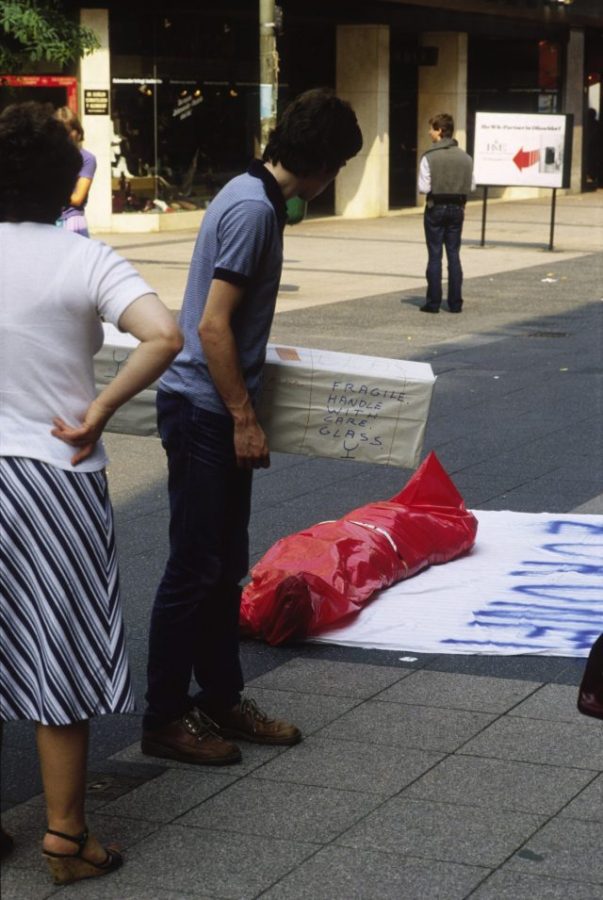
Is this tied to an initial experience?
Yes. I was behaving conspicuously at school. The school psychological service had a lot of fun with me. When you get in their clutches at the age of six, there are always two sides to it. I did not like it at all, since physical punishment was not abolished back then. But I quickly learned what the system actually wanted. If Ritalin had been existent at that time, I would have surely been a test subject.
So did you study psychology from a patient’s perspective as well?
Yes, I was a patient.
Are you looking for individual borderline situations, e.g. through making use of hyperventilation?
In many cases I want to try, although there is not always an artistic goal to be reached. When somebody calls me, describing his or her difficult situation, it always catches my interest. If it is clear that things are not going to work out it is triggering me. I also enjoy surpassing myself – if there is a limit, I plan to exceed it.
Is this also a kind of gambler mentality?
Gambling has played a role in my life. For two years I have subsisted on number combinations. Together with two friends I was pursuing the idea of predicting the motions of the bullets in the roulette just by observing it – incidentally, we did that in the nice casino of Aachen under the big ‘O’ of Zero… Generally, I frequently strive to exhaust things and I ask myself “How far does it go?”
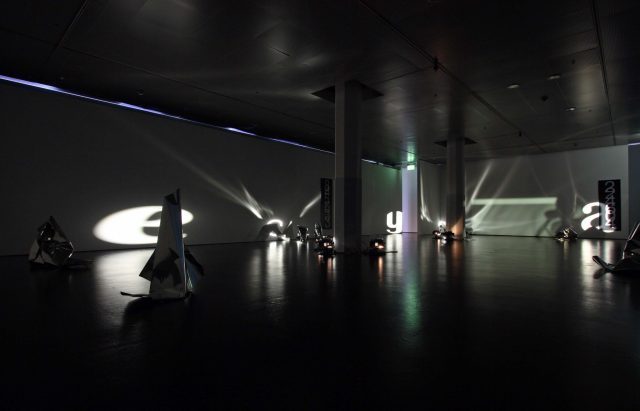
All works and copyrights Mischa Kuball, VG Bild-Kunst, Bonn, 2016
Translation Norah Lewerentz
[1] The second and last part of the interview will be released within the next months.
[2] Broca’sches Areal was first displayed at the gallery of Konrad Fischer in Düsseldorf in 2002. After that, it could be seen at the Museum Neuer Kunst/Zentrum für Kunst und Medientechnologie (ZKM) in Karlsruhe in 2007. Since then, it belongs to the collection of ZKM.
[3] Rotating projection rooms according to Lazslo Moholy-Nagy have been frequently developed under the title of Projektionsraum 1:1:1/rotierend since 1991 – first at Konrad Fischer’s in Düsseldorf, later at Kunsthalle Bielefeld. Today, those installations are part of the collection of Museum Kunst Palast Düsseldorf.
How to cite this article
Peter Tepe (2016): Science-related Art: Mischa Kuball. w/k–Between Science & Art Journal. https://doi.org/10.55597/e697
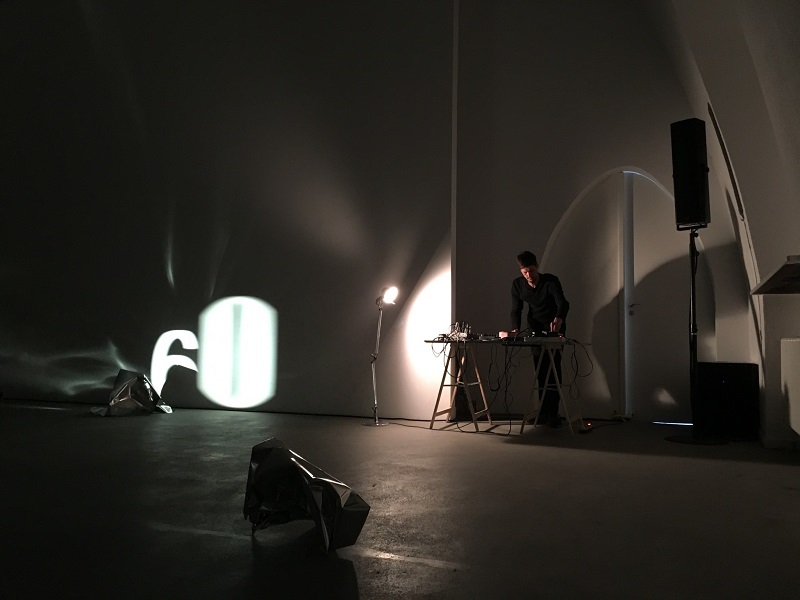


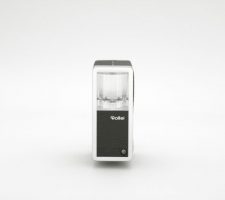
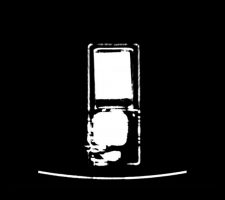
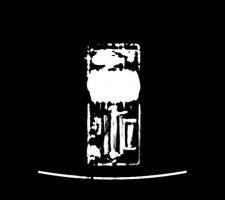
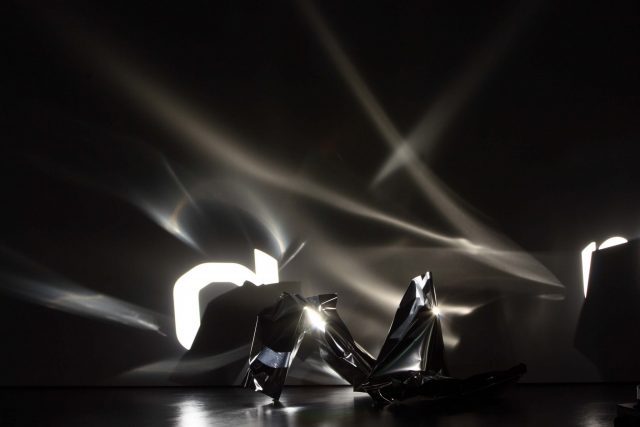

Be First to Comment